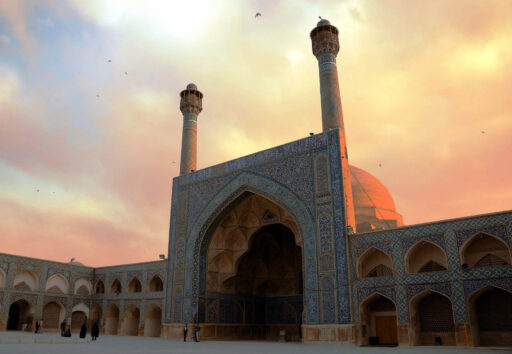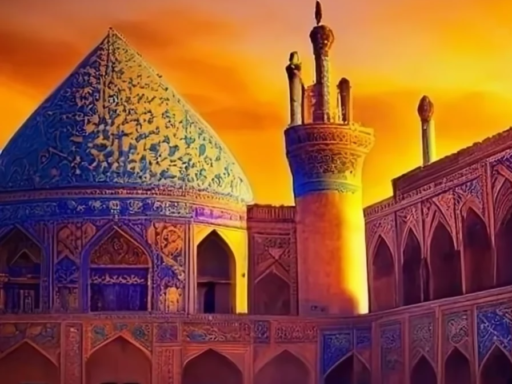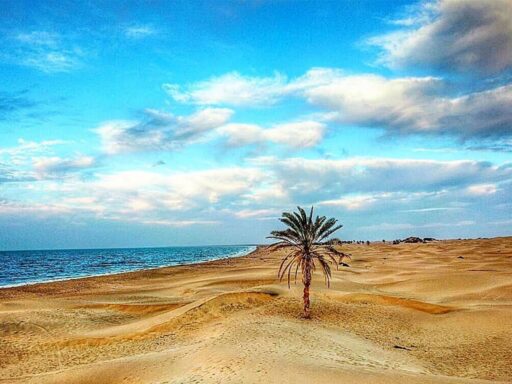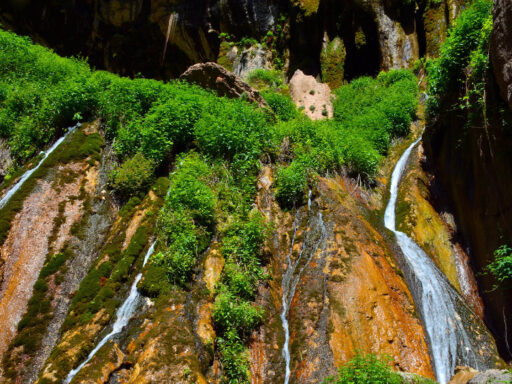Introducing The Jameh Mosque
Nestled in the heart of the historic city of Isfahan, Iran, the Jameh Mosque stands as a testament to the enduring legacy of Persian architecture and Islamic art. This magnificent structure, a masterpiece of design and craftsmanship, has captivated visitors for centuries with its intricate tilework, soaring domes, and exquisite calligraphic inscriptions. More than just a place of worship, the Jameh Mosque is a living museum, a testament to the artistic and cultural achievements of generations of architects, artisans, and craftspeople who poured their souls into its creation.

A Tapestry of History and Cultural Significance
Layers of Architectural Evolution
The Jameh Mosque’s origins can be traced back to the 8th century, during the early years of Islamic rule in Persia. However, the mosque we see today is a fusion of architectural styles and influences that span over a millennium, reflecting the rich tapestry of cultures and dynasties that have left their mark on the city of Isfahan. Each addition and renovation has layered onto the mosque’s fabric, creating a unique and harmonious blend of architectural styles that encompass the Seljuk, Ilkhanid, and Safavid eras.
A Reflection of Isfahan’s Golden Age
The mosque’s grandeur and artistic excellence reached its zenith during the Safavid dynasty, particularly under the reign of Shah Abbas I in the 17th century. This period, known as Isfahan’s golden age, saw the city transformed into a cultural and artistic hub, with the Jameh Mosque serving as a prime example of the artistic patronage and architectural vision of the Safavid rulers. The stunning tile work, intricate calligraphy, and masterful craftsmanship added during this era have become iconic features of the mosque.
A Cultural Crossroads and Center of Learning
Throughout its history, the Jameh Mosque has been more than just a place of worship; it has also served as a cultural crossroads and center of learning. Over the centuries, scholars, artists, and intellectuals have gathered within its walls to exchange ideas, engage in theological debates, and further the pursuit of knowledge. This rich intellectual tradition has contributed to the mosque’s significance as a living embodiment of the city’s cultural and spiritual heritage.
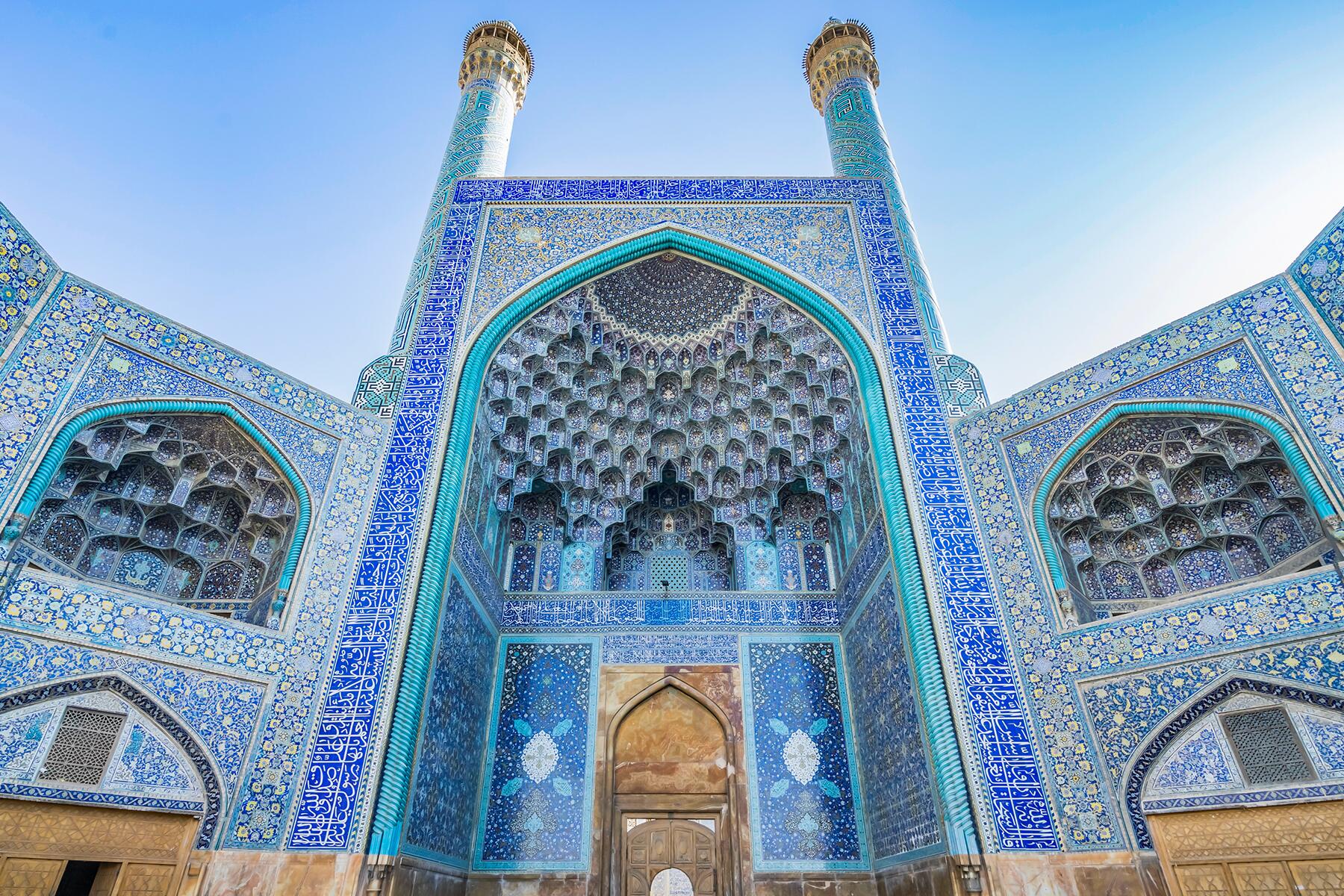
Architectural Wonders and Artistic Masterpieces
The Courtyard: A Harmonious Blend of Form and Function
Upon entering the Jameh Mosque, visitors are greeted by a vast courtyard, a hallmark of traditional Persian mosque architecture. This expansive open space, adorned with intricate tilework and calligraphic inscriptions, serves as a gathering place for worshippers and a transitional space between the outside world and the sanctity of the prayer halls. The courtyard’s graceful proportions and harmonious design elements create a sense of tranquility and reverence, inviting visitors to pause and appreciate the beauty that surrounds them.
The Iconic Domes and Minarets
The Jameh Mosque’s iconic domes and minarets are architectural marvels that have become synonymous with the city of Isfahan. The towering minarets, adorned with intricate brickwork and tilework, serve as beacons guiding visitors towards the mosque’s entrance. The domes, with their ornate tilework and graceful curves, are true masterpieces of Persian architecture, reflecting the skilled craftsmanship and artistic vision of the mosque’s builders.
The Masterful Tilework and Calligraphic Inscriptions
One of the most striking features of the Jameh Mosque is its masterful tilework and calligraphic inscriptions. The mosque’s walls, domes, and iwans (vaulted halls) are adorned with intricate patterns and designs, created using traditional techniques that have been passed down for generations. These artistic elements not only enhance the mosque’s beauty but also serve as a visual representation of Islamic art and spirituality, with calligraphic inscriptions from the Quran and poetry adding a layer of meaning and depth to the architectural canvas.

A Living Museum and Cultural Heritage Site
Preserving Ancient Traditions and Craftsmanship
The Jameh Mosque is more than just a place of worship; it is a living museum that preserves and showcases the rich traditions and craftsmanship of Persian culture. From the intricate tilework and calligraphy to the intricate muqarnas (honeycomb vaulting) and carved stucco work, the mosque is a treasure trove of ancient techniques and artistic expressions. Visitors can witness firsthand the painstaking efforts of skilled artisans who have dedicated their lives to maintaining and passing on these invaluable traditions.
A Gateway to Understanding Islamic Art and Architecture
The Jameh Mosque serves as a gateway to understanding the rich history and cultural significance of Islamic art and architecture. Through guided tours and educational programs, visitors can gain insights into the principles and symbolism that underpin the mosque’s design, from the use of geometric patterns and calligraphy to the spiritual significance of its architectural elements. This immersive experience fosters a deeper appreciation for the profound cultural legacy that the Jameh Mosque represents.
A Catalyst for Cultural Exchange and Dialogue
As a site of immense cultural and historical importance, the Jameh Mosque has become a catalyst for cultural exchange and dialogue. It attracts visitors from around the world, fostering cross-cultural understanding and providing a platform for meaningful discourse on the importance of preserving and celebrating cultural heritage. Through its timeless beauty and enduring legacy, the mosque serves as a bridge between cultures, encouraging open-minded exploration and appreciation of the diverse artistic and spiritual traditions that have shaped human civilization.
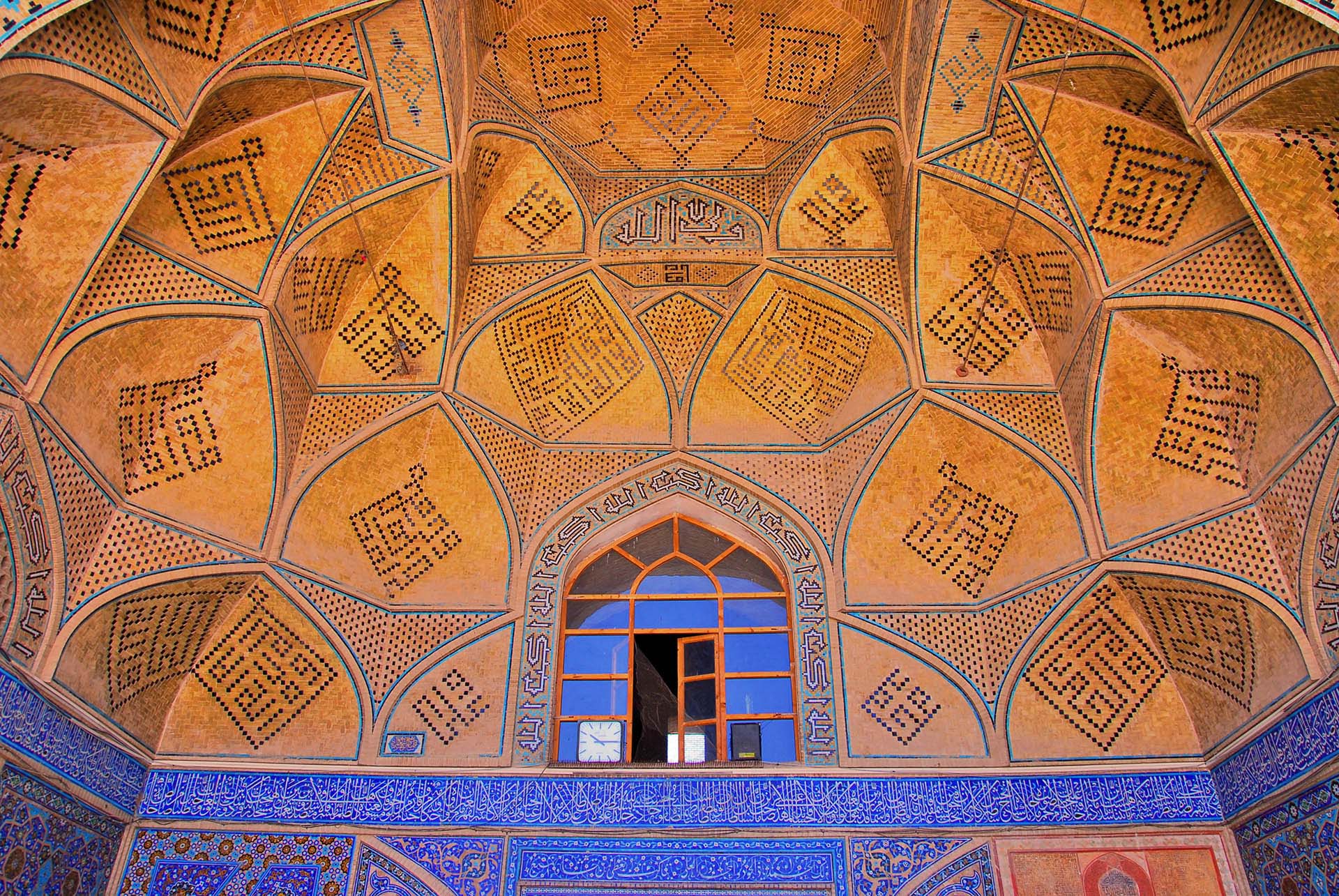
Preserving a Timeless Legacy
Ongoing Conservation Efforts and Challenges
Like many historic sites, the Jameh Mosque faces ongoing challenges in preserving its architectural integrity and safeguarding its cultural legacy. Environmental factors, such as pollution, erosion, and natural disasters, as well as the impact of urbanization and heavy tourism, have taken a toll on the mosque’s delicate tilework, calligraphy, and structural elements. Continuous conservation efforts are underway to address these challenges and ensure the mosque’s longevity for future generations.
Collaborative Initiatives and International Partnerships
To safeguard this architectural and artistic gem, collaborative initiatives have been undertaken by local authorities, cultural organizations, and international bodies. These partnerships bring together experts in engineering, architecture, art conservation, and heritage management, working together to develop innovative techniques and sustainable preservation strategies. Through knowledge-sharing and the implementation of best practices, these initiatives aim to ensure that the Jameh Mosque’s legacy is protected and celebrated for generations to come.
Raising Awareness and Fostering Appreciation
Alongside physical conservation efforts, initiatives are underway to raise awareness about the Jameh Mosque’s cultural and historical significance. Educational programs, guided tours, and multimedia exhibitions aim to foster a deeper appreciation for this architectural gem among local communities and international visitors. By engaging the public and fostering a sense of ownership and pride, these initiatives play a vital role in ensuring that the mosque’s legacy is preserved and celebrated for years to come.

Conclusion
The Jameh Mosque of Isfahan is a true masterpiece of Persian architecture and Islamic art, a living testament to the ingenuity, creativity, and cultural richness that have shaped the city’s history. Its intricate tilework, soaring domes, and exquisite calligraphy have captivated the imagination of visitors for centuries, offering a glimpse into the artistic and engineering achievements of ancient civilizations. More than just a place of worship, the mosque serves as a symbol of resilience, a reminder of the enduring power of art and architecture to transcend time and inspire awe and wonder.
As we continue to appreciate and preserve this architectural marvel, the Jameh Mosque will remain an enduring icon, connecting generations and cultures for centuries to come. Its legacy serves as a reminder of the importance of preserving our shared cultural heritage, ensuring that the stories and achievements of past civilizations continue to inspire and enlighten us in the present and future. Through the Jameh Mosque, the spirit of Isfahan’s golden age lives on, inviting us to appreciate the timeless beauty and profound cultural legacy that have made this mosque an enduring source of wonder and pride.

